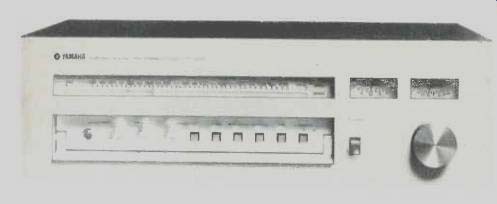
MANUFACTURER'S SPECIFICATIONS
IHF Sensitivity: Normal, 2.0 µV; Wide, 2.5 pV. Selectivity: Normal, 85 dB; Wide, 18 dB. S/N: Mono, 78 dB; Stereo, 75 dB. Capture Ratio: Normal, 0.7 dB; Wide, 0.6 dB. THD: Mono-normal, 0.06%; Mono-wide, 0.04%; Stereo-normal, 0.06%; Stereo-wide, 0.04% at 400 Hz. THD (from 50 Hz to 10 kHz): Mono-normal, 0.2%; Mono-wide, 0.08%; Stereo-normal, 0.3%; Stereo-wide, 0.15%. Image, I.F. and Spurious Rejection: Over 120 dB. AM Suppression: Over 60 dB. Separation: 400 Hz, normal or wide, 50 dB; from 50 Hz to 10 kHz; normal, 35 dB; Wide, 40 dB. Frequency Response: 30-15000 Hz ±0.3 dB. Sub-carrier Suppression: 70 dB. Muting Override Signal Level: From 3 to 30 µV. Stereo Threshold: From 3 to 30 µV. Output Level: 775 mV fixed; 2mV to 70mV variable.
GENERAL SPECIFICATIONS
Power Consumption: 23 watts, 13 watts with illumination off.
Dimensions: 17 1/2. in. W x 5 3/4 in. H x 12 1/3 in. D.
Weight: 28.6 lbs.
Price: $1200.00
The first thing that must be said about this magnificent FM tuner from Yamaha is that it succeeded in giving the test equipment in our laboratory a bad inferiority complex.
Frankly, we thought we had upgraded our measurement equipment so that it was a couple of orders of magnitude better than anything we would be called upon to test. Yet the Yamaha CT-7000 specs are, in the main, better than we are able to measure. And rather than repeat that statement with each reported measurement that follows, we thought we'd better get that out of the way right at the beginning.
We shall report our measurements as we read them, with the understanding that readers (and the people at Yamaha) will sympathize with our limitations.
As for the operating features, circuit highlights, and appearance of this tuner, those we can describe quite accurately, and the photo of the front panel helps. Many of the goodies are hidden under that sleek hinged door which runs across most of the lower portion of the front panel. But with it closed, all one sees when looking at the brushed silver panel of the Yamaha CT-7000 is a long, linear dial scale, calibrated at every MHz and augmented by a 100 point logging scale for easy station reference. Two small "windows" at the right frame the center-of-channel tuning meter and the signal-strength meter which also doubles as a multipath indicating meter. There's a lever-toggle power on-off switch and a massive tuning knob coupled to just about the smoothest acting flywheel arrangement we've ever spun across the 20 MHz's of the FM band. Ah, but when you tap the door base lightly to open it (it swings downwards), what additional wonders are disclosed! There's a built-in headphone jack powered by its own amplifier and a level control for that output, as well as one for the variable-level output jacks at the rear. There's a Muting on-off switch placed adjacent to a control which varies muting threshold, an I.F. Mode switch which varies the i.f. bandwidth (about which we'll have much more to say shortly), a button which selects mode of operation of the dual purpose signal-strength meter, an Auto-Blend switch which, when activated, introduces two degrees of high-blend when listening to weak-signal stereo, depending upon actual signal strength. Also hidden behind the hinged door are a mono/stereo Mode switch and a pushbutton which turns the dial Illumination on and off.
The rear panel, pictured in Fig. 1, contains antenna input terminals for 300-ohm connection and two types of connection facilities for 75-ohm transmission lines-one a coaxial connector, the other a combination of cable clamp (to retain the cable by gripping the outer shielded conductor) and screw terminal for the inner conductor. There are two pairs of output jacks, one for the fixed level outputs, the other for the variable level outputs controlled from the front panel. A pair of jacks designed for connection to an external oscilloscope comes next, followed by an i.f. output jack (which might perhaps been labeled more clearly as a detector or 4-channel output jack which is what it is). A chassis ground terminal, fuseholder and unswitched convenience a.c. outlet complete the rear panel layout.
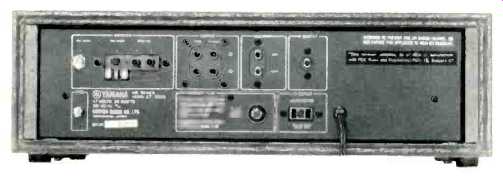
Fig. 1-Rear panel.
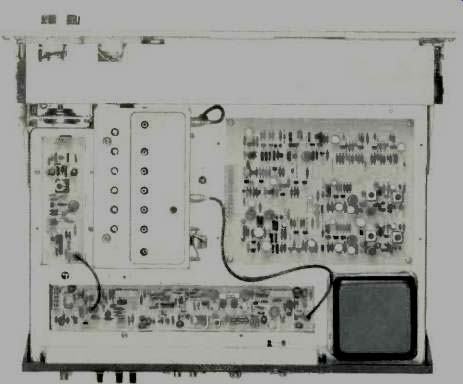
Fig. 2-Interior view.
Circuit Details
Details of the circuitry contained in the Yamaha CT-7000 would take longer to enumerate than the entire length of this report. We shall try to describe a few of the more important and innovative ones. (Refer to Fig. 2, an internal view.) Three dual-gate MOS FETs are used in the frontend, which contains two full stages of r.f. amplification and employs what Yamaha claims is the world's first seven-gang tuning capacitor. A seven-stage differential amplifier is used in the i.f. section together with ceramic and LC filter blocks.
There are actually two separate i.f. stages; "normal" mode is for best selectivity in "crowded" signal areas, while "wide band" works best where station crowding is not a problem and you want the ultimate in phase linearity, high-frequency stereo separation, and lowest possible distortion. A linear-phase wideband discriminator circuit serves as an FM detector and is, according to the maker, individually adjusted for minimum phase distortion. A dual-stage, constant current circuit drives the detector for increased stability.
The MPX decoder section employs a phase-lock loop circuit built up from discrete components (rather than from one of the available "packaged" IC PLLs now available). Negative feedback, unique to Yamaha, is used to reduce inter modulation distortion. As for the PLL circuitry, it is of the type that requires no tuned inductance circuits. Active lowpass filters are used to provide the necessary de-emphasis characteristic, and the outputs of these filters are direct coupled in a three-stage amplifying system, which includes a buffer amplifier. A separate three-stage direct-coupled audio amplifier is used to drive the headphone jack. Each circuit board used in the construction of the Yamaha CT-7000 is individually shielded in its own stainless steel cover. While we don't normally "count transistors" in evaluating the quality of a product, it may be of some interest to readers to know that this tuner contains 108 transistors, 12 FETs, 33 diodes, nine zener diodes, and seven IC circuits!
Laboratory Measurements
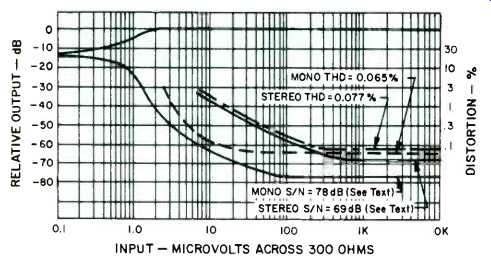
Fig. 3-FM quieting and distortion characteristics, " Normal" i.f.
position.
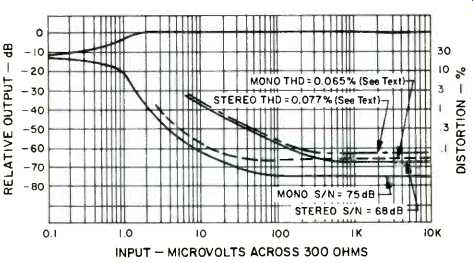
Fig. 4-FM quieting and distortion characteristics, "Wide" i.f.
position.
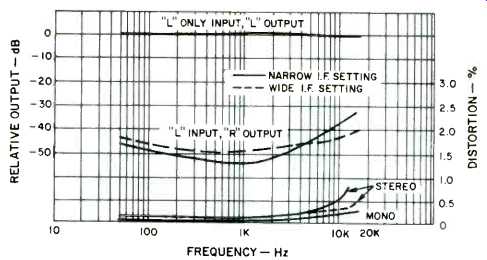
Fig. 5-Separation and distortion versus frequency.
Again, with apologies for our test equipment, we measured an IHF sensitivity of 1.9 µV in the "normal" i.f. position and 2.4 µV in the "wide" position. Some 50 dB of quieting was attained at 2.8 µV and 3.4 µV for these two operating modes respectively. Figures 3 and 4 show our measured S/N results of 78 dB and 69 dB for mono and stereo in the "narrow" or "normal" position and 75 dB and 68 dB for the same measurements made in the "wide" setting. We suspect that our generator's limit in mono is therefore 78 dB in mono and somewhere around 70 dB in stereo, which accounts for our inability to measure claimed specs. Note too that our THD measurements at mid-frequencies (1 kHz) for both the "normal" and "wide" settings were the same, indicating clearly that we were limited by the built-in distortion of our signal generating equipment. We are therefore in no position to dispute Yamaha's claim of 0.04% in the wide position for both mono and stereo. It's very likely true! We had previously suspected that the stereo separation capability of our stereo FM generator was about 50 dB, since that's the most we ever measured for any tuner or receiver we ever tested. Much to our surprise, we obtained a reading of 53 dB for mid-frequency separation when operating the CT-7000 in the narrow position, as plotted in Fig. 5. Interestingly, in the "wide" operating mode, although mid-band separation was slightly less, high frequency separation was clearly better, remaining above 40 dB all the way out to 15 kHz. These two plots clearly prove the importance of wide bandwidth for good high-frequency stereo separation, as well as the need for excellent phase linearity throughout the i.f. and detection system. Yamaha obviously has a good measure of both. Even within the limitations of the generator, the distortion curves shown at the bottom of Fig. 6 clearly show that increased bandwidth leads to lower high-frequency distortion in stereo. Note that when this setting was used, THD at 10 kHz in stereo was less than 0.3%-the lowest we have ever encountered. No low-pass filters were used in making this or any other measurements. There was just no evidence of the usual "beats" with the 19-kHz carrier we find with so many other FM tuners.
As for spurious, image, and i.f. rejection, our instrumentation permits us to read up to 100 dB for these specs. That's what we read with the Yamaha under test. The manufacturer claims better than 120 dB for each. What more can we say? Measuring capture ratio below 1.0 dB is tricky at best, but we managed to confirm at least one of Yamaha's claims for this important spec: 0.7 dB in the normal setting with a 100 µV input. Fantastic! Muting level was found to be adjustable in our sample over the signal strength range from 4µV, while stereo threshold was factory set at about 7.0 µV, a suitable point for this tuner. Transition from mono to stereo is noiseless and absolutely positive. At signals below 100 µV, blending of high frequencies as well as upper mid-frequencies takes place automatically, reducing separation substantially above 1 kHz, but reducing noise to listenable levels. Between 100 µV and 1 mV signal strengths, the auto-blend feature, if activated, blends highs to a lesser. degree, retaining adequate separation while accomplishing noise reduction which makes medium-strength signals received from stereo broadcasters quite good, in terms of background noise.
Listening and Use Tests
We were in for a few more surprises when we got down to our listening tests and evaluations. It was then that we first began to appreciate what Yamaha calls its "auto-touch tuning" system. The large tuning knob is actually part of a capacitance switch which is activated by the user when he touches the knob. While tuning to a station, the built-in a.f.c. circuitry is turned off to enable the user to zero in precisely on the desired station signal. While this tuning is in process, the tuning indicator lamp is extinguished. As a station signal is approached, it glows softly and, when tuning has been completed and the user lets go of the tuning knob, the a.f.c. circuit comes back on and the tuning indicator is illuminated to full brightness. Normally, we have frowned upon a.f.c. circuits in general as it was our feeling that they usually contribute to distortion and non-linearities in a tuner circuit, and that given today's heat-free solid-state stable circuitry, there is no need for a.f.c. as a drift-prevention crutch. Well, this a.f.c. circuitry contributes absolutely no added distortion to the audio output of the Yamaha CT-7000. In fact, all our measurements in the lab were made with the a.f.c. active since we obviously didn't keep our fingers on the tuning knob while making the measurements. When we became aware of the a.f.c. feature and the way it works, we decided to check some of our measurements to see if we could fine-tune the tuner (with hands on tuning knob to deactivate the a.f.c.) for lower distortion than we had previously observed. If any improvement occurred under these conditions, it was too low for us to observe, since we were already below 0.065% in our previous mono THD readings. Nor could we detect even the slightest shift or change of appearance of the output waveform as observed on our monitoring oscilloscopes as a.f.c. was activated and deactivated. The only time the a.f.c. did anything was when we deliberately detuned the signal. Under those conditions, the a.f.c. was strong enough (when reactivated automatically) to pull the tuning close enough to optimum so that distortion was once again below 0.1%. Here is an a.f.c. circuit that doesn't "get in the way" of performance and can be of genuine assistance to the "sloppy" knob twirler who doesn't have the patience to tune as carefully as he or she should!
(Editor's Note: Yamaha says they designed the a.f.c. circuitry in their tuner sections as a final tuning compensator, to minimize distortion and increase separation.) It goes without saying that the signals received were limited in quality entirely by the broadcast practices of the stations we received. Which, of course, brings us to the ultimate question. Should one spend $1200.00 on what is probably the best performing tuner presently available, when most stations are becoming worse and worse insofar as the quality of their broadcast signals are concerned? That depends largely upon where you are located and whether or not you have stations in your area that are careful about the kinds of signals they transmit. Is this the "best" tuner we have ever measured? Well, the previously tested Sequerra Model One does as well (we can't say "better" since in both cases our test equipment was not as good as the product demanded), but it costs more than twice as much as the Yamaha. Of course, the Sequerra has all kinds of nice things like digital frequency readout and panoramic oscilloscope displays, use of a scope instead of meters for tuning and signal analysis, and the like. There would therefore seem to be two choices for the absolute perfectionist who seeks the best in FM tuners. If you are fascinated by digital readout, scopes and the like and seek absolutely tops in specifications and performance, take home a Sequerra Model One. If you are strictly a purist, and want a super FM tuner, that's equally first-rate in its specifications and measured performance, that's flawlessly designed, simple to operate, and offers that important wide-band mode (we were able to take advantage of it even in the crowded New York metropolitan area down at the bottom of the dial), you're not likely to find a better performer than the Yamaha CT-7000.
-Leonard Feldman
(Audio magazine, Dec. 1975)
Also see:
Yamaha Model CR-1000 Stereo FM Receiver (Jan. 1975)
Yamaha R-9 Receiver (Dec. 1985)
Yamaha Model B1 Power Amplifier (Aug. 1975)
Yamaha CR-800 receiver (Jan 1975)
Yamaha CA-1000 Integrated Amplifier (Sept. 1974)
= = = =